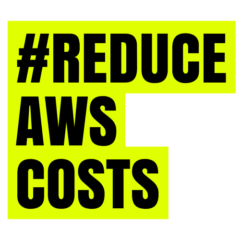In the ever-evolving landscape of cloud computing, AWS Savings Plans emerge as a powerful tool for businesses seeking to optimize their cloud expenses while maintaining flexibility. AWS Savings Plans offer a cost-effective alternative to On-Demand pricing, providing substantial savings for a commitment to a consistent amount of compute usage over a 1 or 3-year period. Let’s dive into the key aspects of AWS Savings Plans and explore how they can benefit your organization:
What are AWS Savings Plans?
AWS Savings Plans are a flexible and cost-effective pricing model designed to provide significant savings on AWS usage costs. They allow users to commit to a consistent amount of compute usage (measured in $/hr) for a defined term, in exchange for a discount compared to standard On-Demand pricing.
Key Features
Flexibility
Savings Plans offer the flexibility to adapt to changing business needs. They automatically apply to any compute usage within a specified region, allowing you to switch between instance families, sizes, and operating systems while still enjoying the discounted rates.
Automatic Savings
Once you commit to a specific amount of usage, Savings Plans automatically apply to your eligible AWS usage. This ensures that you benefit from the discounted rates without the need for manual adjustments.
No Upfront Payments
Unlike Reserved Instances, Savings Plans do not require upfront payments. This eliminates the need for a large upfront investment, making it more accessible for businesses of all sizes to take advantage of cost savings.
Commitment Flexibility
AWS offers two types of Savings Plans: Compute Savings Plans and EC2 Instance Savings Plans. Compute Savings Plans provide flexibility in instance family, size, and region, while EC2 Instance Savings Plans offer more specific commitments based on instance family and region. I will write a post on the differences and benefits on these later on.
Coverage Across Instance Types
Savings Plans cover a wide range of instance types and families, offering a broad scope of applicability. This ensures that you can enjoy savings across various compute resources within the AWS ecosystem.
How to Get Started
Analyze Usage Patterns
Before committing to Savings Plans, analyze your AWS usage patterns to understand your compute requirements. AWS Cost Explorer and other cost management tools can provide insights into your spending and help you make informed decisions.
Choose the Right Plan
Select the type of Savings Plan that aligns with your business needs. Compute Savings Plans provide flexibility, while EC2 Instance Savings Plans offer more specific commitments.
Review and Adjust
Regularly review your usage and adjust your AWS Savings Plans as needed. AWS allows you to modify your commitment to ensure it aligns with your evolving workload requirements.
Combine with Other Cost Optimization Strategies
While Savings Plans offer substantial savings, combining them with other cost optimization strategies such as rightsizing, Reserved Instances, and usage monitoring can further enhance your overall cost efficiency. Another way is the understanding of possible forecasting oft your individual spend and applying AI. PUMP.co auto purchases commitments on your behalf (RIs/Savings plans) and that is a way how you can get the maximum discounts and save even more than 50% of you costs.
Conclusion
AWS Savings Plans present a valuable opportunity for organizations to achieve significant cost savings without compromising flexibility. By understanding your usage patterns, choosing the right plan, and regularly reviewing your commitments, you can unlock the full potential of AWS Savings Plans and optimize your cloud expenses for the long term. Embrace the power of Savings Plans and take a proactive approach to managing your AWS costs for a more efficient and cost-effective cloud infrastructure.




